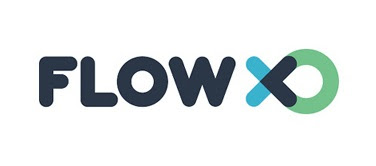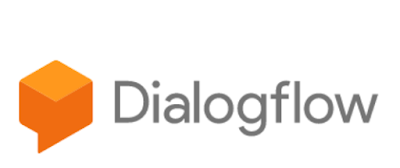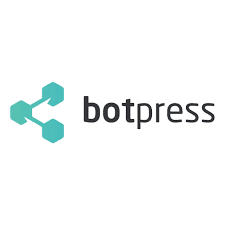Are you tired of trading your precious time for money? Do you dream of earning income while you sleep, travel or pursue other interests? Look no further than ChatGPT, a revolutionary platform that allows you to create a chatbot that can generate passive income for you.
With its advanced artificial intelligence capabilities, ChatGPT enables you to design a conversational agent that can engage with customers, offer products or services, and collect payments - all without requiring your constant attention. In this guide, we'll show you how to create a profitable chatbot with ChatGPT and start earning passive income today.
The beauty of passive income is that it frees up your time and provides financial stability. With a chatbot powered by ChatGPT, you can generate income 24/7 without needing to actively manage the business. Once you have created your chatbot, it can handle customer inquiries, process payments, and even offer personalized recommendations to users.
With the ability to integrate with various messaging platforms, your chatbot can reach customers around the world and provide an effortless user experience. Plus, the cost of creating and maintaining a chatbot is significantly lower than running a traditional business, making it an accessible option for aspiring entrepreneurs.
ChatGPT is a service that lets you create chatbots using natural language processing and deep learning techniques. You can customize your chatbot's personality, voice, style, and domain of knowledge. You can also integrate your chatbot with various platforms such as websites, social media, messaging apps, and voice assistants.
But how can you make money with your chatbot? Here are some tips to help you get started:
Choose a niche and a target audience
You want to create a chatbot that provides value to a specific group of people who have a problem or a need that your chatbot can solve or satisfy. For example, you can create a chatbot that offers travel advice, fitness coaching, mental health support, or entertainment. Here are some tips to help you think:
- Offer digital products or services: You can sell e-books, courses, digital downloads, or other online services directly through your chatbot. Make sure to integrate a payment gateway like PayPal or Stripe to process transactions securely.
- Promote affiliate products: If you have a niche audience, you can partner with other businesses and promote their products to your chatbot users. You can earn a commission for each sale made through your referral link.
- Collect leads: Use your chatbot to gather user information like email addresses, phone numbers, or social media profiles. You can then use this data to build your email list and run targeted marketing campaigns.
- Offer subscription-based services: You can create a membership program or offer access to exclusive content or features for a monthly fee. This is a great way to generate recurring revenue.
- Sell physical products: If you have a physical store, you can integrate your chatbot with your inventory system and allow users to purchase products directly through the platform.
Define your monetization strategy
You need to decide how you will generate revenue from your chatbot. There are different ways to do this, such as charging a subscription fee, selling products or services, displaying ads, collecting donations, or getting commissions from referrals or affiliates.
Defining your monetization strategy is a crucial step in creating a profitable chatbot. You need to consider your target audience, business model, and value proposition to determine the most suitable revenue model for your chatbot.
If you plan to charge a subscription fee, make sure to offer exclusive content or features that justify the cost for users. If you are selling products or services, optimize your chatbot to guide users through the purchase process and make the payment experience seamless.
Displaying ads can be an effective way to monetize your chatbot if you have a large user base, but make sure to balance the ads with user experience and avoid being too intrusive. Collecting donations is another option, but it requires a strong connection with your audience and a compelling cause to support.
Getting commissions from referrals or affiliates can be a lucrative revenue stream if you have a niche audience and can promote relevant products or services.
Whichever monetization strategy you choose, make sure to align it with your business goals and create a sustainable income stream for your chatbot.
Design your chatbot's user experience
You want to make sure that your chatbot is engaging, helpful, and easy to use. You need to plan your chatbot's flow, script, and tone. You also need to test your chatbot's performance and functionality and improve it based on user feedback.
Designing your chatbot's user experience is crucial to its success. A well-designed chatbot can increase user engagement, build trust, and drive conversions. To create an effective user experience, you need to consider the following:
- Plan your chatbot's flow: Map out the conversation flow and anticipate user needs and responses. Use decision trees and branching to create a personalized experience for each user.
- Write your chatbot's script: Develop a conversational tone and style that reflects your brand's personality and values. Write clear and concise messages that are easy to understand.
- Test your chatbot's performance: Conduct user testing and gather feedback to identify areas for improvement. Test your chatbot's functionality, accuracy, and response time to ensure a smooth user experience.
- Improve your chatbot based on user feedback: Use feedback to optimize your chatbot's performance, fix bugs, and add new features or content. Monitor user interactions and analyze data to refine your chatbot's flow and script.
By following these steps, you can create a chatbot that provides value to your users and achieves your business objectives. Remember to prioritize user experience, optimize performance, and continuously improve your chatbot based on user feedback.
Promote your chatbot and grow your audience
You need to market your chatbot and attract potential customers. You can use various channels such as social media, blogs, podcasts, videos, or email newsletters. You can also collaborate with other creators or influencers in your niche and leverage their audience.
Promoting your chatbot and growing your audience is essential to reach your revenue goals. Here are some effective ways to market your chatbot:
- Leverage social media: Use social media platforms like Twitter, Facebook, LinkedIn, and Instagram to promote your chatbot and engage with your target audience. Share relevant content, interact with users, and provide valuable insights to build trust and authority.
- Create content: Produce blog posts, podcasts, videos, or other types of content that are relevant to your niche and showcase your expertise. Use your chatbot to deliver the content and engage with users.
- Utilize email marketing: Use email newsletters to update your subscribers about your chatbot's new features, promotions, or content. Use catchy subject lines, personalization, and call-to-action to encourage users to interact with your chatbot.
- Collaborate with other creators or influencers: Find other creators or influencers in your niche and collaborate with them to reach their audience. Offer guest posts, interviews, or promotions to gain exposure and credibility.
- Use paid advertising: Use paid advertising like Google Ads, Facebook Ads, or influencer marketing to reach a broader audience and increase conversions.
By utilizing these channels, you can promote your chatbot and attract potential customers. Never forget to focus on creating valuable content, building trust with your audience, and continuously testing and optimizing your marketing strategy.
Analyze your chatbot's data and optimize your results
You need to monitor your chatbot's metrics and analytics and measure its effectiveness and profitability. You can use tools such as Google Analytics or Chatbase to track your chatbot's traffic, conversions, retention, satisfaction, and revenue. You can also use A/B testing or experiments to compare different versions of your chatbot and see what works best. By analyzing your chatbot's data and optimizing your results, you can improve its performance, profitability, and user satisfaction.
Platforms to build chatbot with ChatGPT
Chatbots are becoming more popular and useful in various domains, such as customer service, e-commerce, education, entertainment and more. Chatbots can provide natural and engaging conversations with users, using advanced natural language processing (NLP) techniques and artificial intelligence (AI).
However, building a chatbot with ChatGPT is not a trivial task. It requires a lot of technical skills and resources, such as coding, hosting, integration, testing and maintenance. Fortunately, there are some platforms that can help you create chatbots with ChatGPT easily and quickly, without requiring much coding or infrastructure.
Let us introduce some of the best platforms to build chatbots with ChatGPT, and compare their features, advantages and disadvantages.
Rasa:
Rasa is an open-source platform that enables you to build conversational AI applications with ChatGPT. You can use Rasa to create chatbots for various use cases, such as customer service, sales, booking, health care and more. You can also integrate your chatbots with various channels and platforms, such as Facebook Messenger, Slack, Telegram and WhatsApp.
Rasa provides a framework that allows you to define the logic and flow of your chatbot using natural language understanding (NLU) and dialogue management (DM) components. You can also customize your chatbot's behavior and responses using machine learning (ML) models and policies.
Rasa is free to use for development and testing purposes, but you need to pay for hosting and deployment services. You can access Rasa through its website or command-line interface.
Pros:
- Flexible and scalable
- Supports multiple languages and domains
- Allows full control over your data and code
- Has a large and active community of developers
Cons:
- Requires coding and technical skills
- May have a steep learning curve
- May not provide enough support or documentation
FlowXO
FlowXO is a platform that lets you create chatbots with ChatGPT without coding. You can use FlowXO to create chatbots for various purposes, such as lead generation, marketing, surveys, quizzes and more. You can also connect your chatbots with over 100 apps and services, such as Google Sheets, Mailchimp, Stripe and Zapier.
FlowXO provides a visual editor that allows you to design the logic and flow of your chatbot using pre-built templates or drag-and-drop elements. You can also test your chatbot in real-time using a live chat widget or a simulator.
FlowXO is free to use for up to 5 chatbots and 500 interactions per month, but you need to pay for more features and resources. You can access FlowXO through its website or web app.
Pros:
- Simple and intuitive
- No coding required
- Supports multiple channels and integrations
- Provides analytics and reports
Cons:
- Limited customization and functionality
- May not handle complex or dynamic conversations
- May not offer enough security or reliability
Dialogflow:
Dialogflow is a Google-owned platform that allows you to create AI-powered chatbots using natural language processing (NLP). Dialogflow offers a drag-and-drop interface, pre-built templates, and integration with various platforms, including Google Assistant, Facebook Messenger, and Slack.
Dialogflow is available in two editions: the standard edition, which is free for up to 15,000 text requests per month, and the enterprise edition, which offers more advanced features, higher scalability, and support for voice interactions, but requires a paid subscription. Dialogflow also offers integrations with other Google services such as Google Cloud Platform, Firebase, and Google Sheets.
Pros:
- User-friendly interface: Dialogflow offers a drag-and-drop interface that makes it easy to build and customize chatbots without coding skills.
- Pre-built templates: Dialogflow provides pre-built templates for common use cases such as customer service, e-commerce, and FAQs, which can save time and effort.
- Integration with various platforms: Dialogflow integrates with popular platforms such as Google Assistant, Facebook Messenger, and Slack, allowing you to reach a wider audience.
- Robust analytics: Dialogflow provides detailed analytics and insights into your chatbot's performance, allowing you to optimize its effectiveness and profitability.
Cons:
- Limited customization options: Dialogflow's pre-built templates and limited customization options may not meet your specific needs, and you may need to use custom code or third-party integrations to add functionality.
- Learning curve for advanced features: Dialogflow's more advanced features, such as custom entities and intents, may require some technical skills and experience to implement effectively.
- Relatively high pricing for enterprise plans: Dialogflow's pricing may be relatively expensive for enterprise plans, especially if you need to handle high volumes of traffic or complex use cases.
Botpress:
Botpress is an open-source platform that enables you to build chatbots using a visual interface and JavaScript. Botpress offers features such as a visual flow editor, built-in integrations, and a community forum. It supports various channels such as Facebook Messenger, WhatsApp, Slack, and web chat.
Botpress uses a modular and extensible architecture that allows developers to customize and extend its functionality. It also provides a variety of pre-built templates, modules, and integrations that can be easily integrated into the chatbot.
Botpress is available in two editions: the community edition, which is free and open-source, and the pro edition, which offers additional features, support, and hosting options, but requires a paid subscription. Botpress also provides integrations with various third-party services such as AWS, Google Cloud, and Dialogflow.
Pros:
- Open-source
- Flexibility, customizability, and cost-effectiveness
- Advanced analyics
- Multi-channel support
Cons:
- Steeper learning curve for non-technical users
- Limited NLP capabilities
- Less robust analytics.
Tars:
Tars is a platform that lets you create chatbots for lead generation and customer support using a drag-and-drop interface. Tars offers features such as conversation flow templates, integrations with various platforms, and custom branding.
Pros:
- Ease of use,
- Advanced analytics
- Affordable pricing.
Cons:
- Limited customization options,
- Focus on lead generation rather than customer service.
Creating a chatbot that generates passive income with ChatGPT is not easy, but it is possible if you follow these tips and put in the work. ChatGPT is a powerful and flexible platform that gives you the opportunity to create a unique and valuable chatbot that can serve your audience and earn money for you.
















No comments: